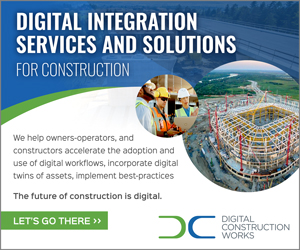Why Projects Fail
For every project you undertake, you have a vision of where you want to go and what the world will look like when you get there. Often this is like the Emerald City of Oz, where all your problems will be solved once you find your yellow brick road. The reality is there is no yellow brick road!
There are many obstacles and sidetracks that can lead you astray if you’re not careful. You must start on the right track and stay on that track to get where you want to go. However, stakeholders can have a different path in mind because their expectations are not aligned and may be in conflict, even when they want the change the project brings. If these conflicts aren’t dealt with and expectations aligned, the project will fail to deliver the expected results within the planned schedule and budget, the very definition of failure!
So how do we align stakeholder expectations and avoid failure?
Plan, Plan, Plan!
If plans are even done, they’re often thrown together as an afterthought to complete a checklist, or they’re just boilerplate text that is too generic to be helpful.
Here are five critical plans—our “Five Pillars to Project Success”—we recommend you do for every project:
- Initiation Plan
- Risk management Plan
- Communication Plan
- Change Control Plan
- Adaptive Project Plan
These plans are the best way we’ve found to align and manage stakeholder expectations and deliver successful projects. Fortunately, they are not that difficult to do and don’t take much time.
Initiation Plan
The Initiation Plan is the central pillar. The others depend on its content, which is why it’s so important and must be completed first. Its purpose is to align stakeholder expectations and get their buy-in. It has three main parts:
- Objective: Description of what the project is trying to accomplish and why. The reason why is critical, as it provides the guidepost for alignment.
- Justification: Reasons why this is the right project (based on your organization’s project selection requirements), including the business case, methodology, alternatives considered, and charter.
- Approach: Plan to accomplish the project, which is most important for aligning stakeholder expectations.
While the Initiation Plan helps align stakeholder expectations, the other plans help manage those expectations during the project and support the Initiation Plan.
Risk Management Plan
Managing risk is one of the main jobs of project management and one of the least understood. You can’t eliminate risk, and you can’t ignore it. But you can’t worry about it all the time either, or you’ll never get anything else done—and that becomes your biggest risk!
A good Risk Management Plan contains more than boilerplate issues. It is a carefully considered document that links potential issues with both avoidance and mitigation plans. It allows you to decide in advance how to handle problems, so that the decision isn’t made in the heat of the moment.
How you identify, plan for, and handle all risks are central to keeping your project on track, preventing setbacks from happening and getting back on track when they do.
Communication Plan
An effective Communication Plan aligns and manages expectations by taking into account differences in how people process information. Executives, for example, want brief, concise content that broadly covers the project at a high level while technical people need specific details.
Implementing the plan effectively ensures stakeholders receive the right information through the right media at the right time, and especially when changes occur, or threats are encountered.
It not only ensures that people know what is happening during the project, but also what value the project brings to the organization and what is expected of them when it’s complete.
Change Control Plan
Change is to be expected. Long gone are the days of freezing requirements, but that doesn’t mean you accept every change request either. Some changes are more important than others and a good Change Control Plan establishes criteria for acceptance or rejection.
It allows you to balance the project objectives, while integrating new or updated requirements. Not only can you track changes, but you can also change the track or path of the project if the objectives change.
The Change Control plan should fit into your project governance methodology and tie to your Risk Management and Communication Plan by preparing the organization for the changes that implementation of the project will bring.
Adaptive Project Plan
The Adaptive Project Plan provides the details and tasks needed to achieve the Initiation Plan, but it is more than just a work breakdown structure (WBS). By adaptive, we mean that it changes based on changes in the other plans, allowing you to adapt the project to meet changing requirements and manage risks, while providing enough details to keep management happy.
It ties into the other plans by—
- Documenting how to achieve the objective and carry out the Initiation Plan
- Specifying tasks for avoiding identified risks, and adding tasks to mitigate or contain the risk if an event happens (Risk Management Plan)
- Including milestones that are identified in the Communication Plan so that stakeholders are kept apprised of progress or issues
- Setting tasks for adding changes and communicating them to stakeholders, containing tasks to prepare the organization to make use of and gain value from the project (Change Control Plan)
Conclusion
Projects are considered failures when they fail to deliver the expected results within the planned schedule and budget, often due to conflicting expectations that stakeholders have for project results and for how the project is managed. We’ve found that project success depends a great deal on spending a little time building a good foundation with the five project pillars. Doing this will get you started on the right track, and tying everything together through an Adaptive Project Plan will help you stay on the right track to arrive at a destination that all stakeholders consider a success.

















